Ice Climbing Equipment And Techniques
Ice climbing is defined as an action of climbing the inclined ice formations such as glaciers, frozen water falls or the blocks of ice topping the mountains. The concept of ice climbing pretty much emerged from the rock climbing and mountaineering and its origin can be dated back to the early 1900s.
Some say that it emerged out of the need for thrill by the adventure junkies who found climbing the inclined ice formations in their path of mountain climbing more thrilling and exciting. Ever since the invention of crampons, which were invented by Oscar Eckenstein, to make the climbing of ice formations easy, the ice climbing has become one of the most attractive task for the adventure lovers all over the world.
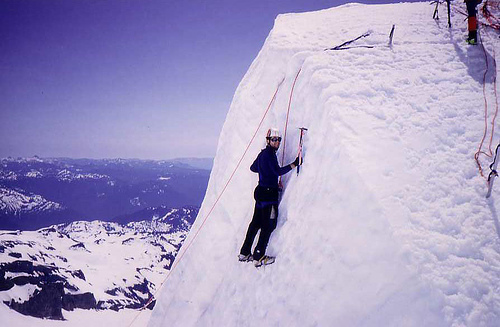
Climbing the frozen ice is by no means an easy task. It is perhaps one of the most life risking and most exhilarating task ever made by man. Due to the excitement and the thrill it offers, ice climbing is a must achieve target for all the people in search for a serious adrenaline rush.
Special Tools Required For Ice Climbing
There are some special tools designed for the purpose of ice climbing as the climbing of frozen ice requires a much more effort.
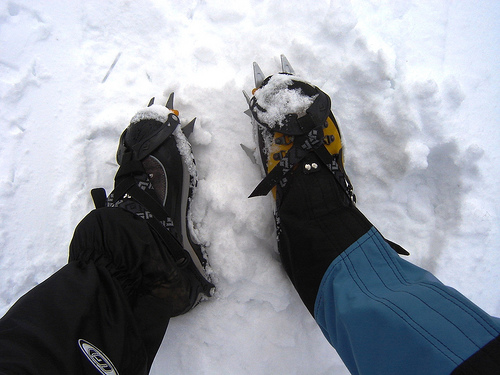
Crampons
Crampons are special toothed claws that are attached to the bottom of the boot of the climber. These crampons are mandatory for safe vertical climbing of the frozen ice as they get fixed to the ice making the movement possible.
During the 1930s the structure of crampons was further revolutionized by the addition of special fangs Laurent Grivel. This made the boot of the climber adhere to the frozen ice much more efficiently.
Famous Mountain Climbers
- Mountains And Famous Climbers
Mountains have always fascinated mankind. Their glorious heights, slopes and slippery features and stony structures have always been so captivating and intriguing. - Famous Climbers
There are some activities in the world that have no limits, no bound no ends. These activities are extreme in any definition and people perform all these activities just to satisfy their adventurous nature.
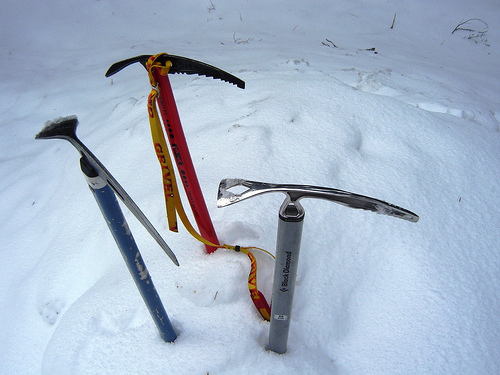
Ice Axe
Ice axe is probably oldest tool used for the purpose of ice climbing. Before the invention of crampons, the climbers who met the frozen ice during their path of mountain climbing used ice axe for vertical climbing.
For the sole purpose of ice climbing both the ice axe and the crampons are necessary. The crampons get the climbers fixed to the frozen ice whereas the ice axe is used to the chop the ice to make steps easy.
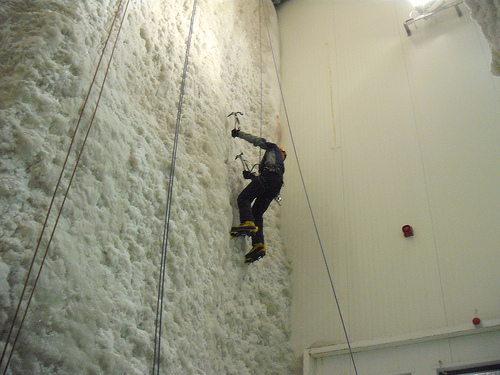
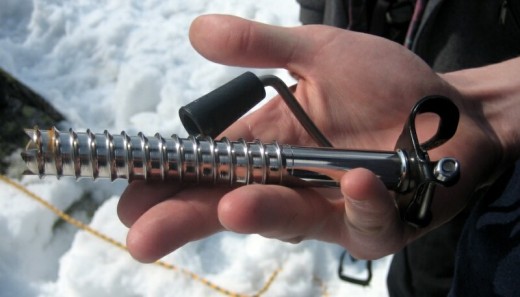
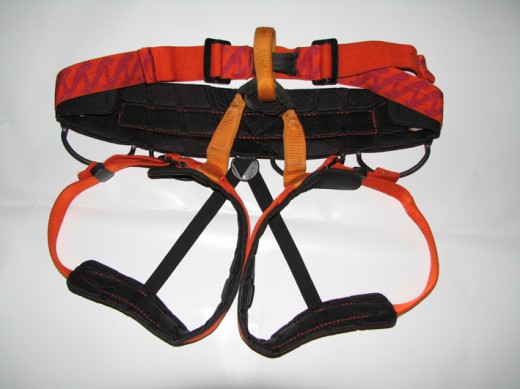
The Rope System
Climbing is impossible without the ropes. The rope system for the ice climbing consists of a single, a double and a twin rope.
The Ice Screws
Ice screws are special tools used for the ice climbers for protection. These are used when the climber is ascending upwards.
The Climbing Harness
The climbing harness is used for attaching the ropes.
Top Mountains To Climb
- Famous Mountains Of The World
The word mountain takes it origin from the Latin word Montem and its use can be dated back to the 13th century. The oxford dictionary describes mountain as as "a natural elevation of the earth. - Famous Himalayan Mountains
Nature is full of beauty, there are countless things around the world which remind us about the beauty of the world we live in. These mountains, covered with glaciers are the most extreme and difficult to climb.
Tools To Carry In Ice Climbing And Where To Keep Them
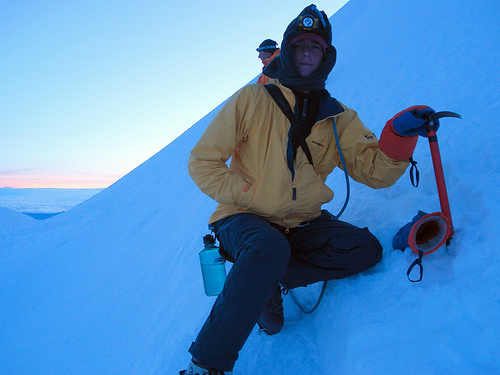
Special Techniques Used By The Ice Climbers
Ice climbing is comparatively more difficult than either rock climbing or mountain climbing and far more dangerous. It requires much more technical effort from the climber’s part. Only those who are experienced and are well trained can do the task.
Usually there is a group of climbers climbing together one leading the way for the other. Climbing the ice alone is almost impossible.
Following are some special techniques used by the ice climbers:
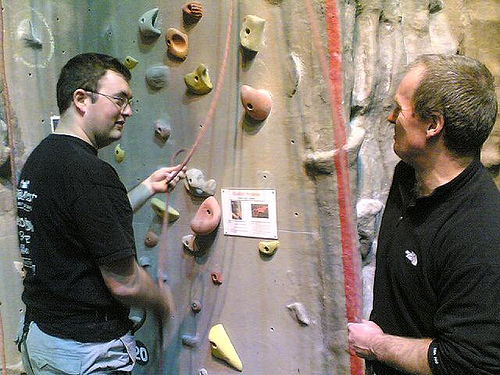
The Tying Of The Rope To The Harness
The rope should be tied the harness in a way that it provides the maximum security to the climber. Usually the knot preferred for the tying is the bowline and thumb knot. The reason for which is that it is secure and can easily be opened when frozen.
The Front Pointing Technique
The front pointing technique is used for the vertical climbing. The climber fixes his position on the ice by first inserting in the front point of the crampon in the ice while fixing the axe on the ice above his head. This technique requires a lot of force, therefore ice climbing is for those who are strong and practiced enough.
Climbing Wall And Rocks
- Wall Climbing
Wall climbing is a wonderful sport whose lovers are found in common these days. This game has a positive aspect that it can be outdoor and even indoor too.
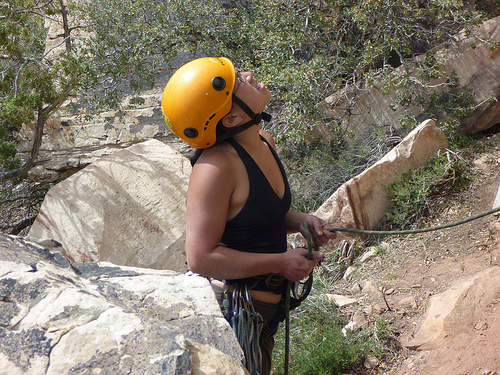
The Belaying Technique
The belaying technique involves the leader fixing a running belay (either running or fixed) on the ice and tying a rope around it.
The next climber then on reaching the point removes the protection. The job of the leader is to make the protections for the followers until he reaches the top of the pitch. There he builds a belay anchor for the following climber.
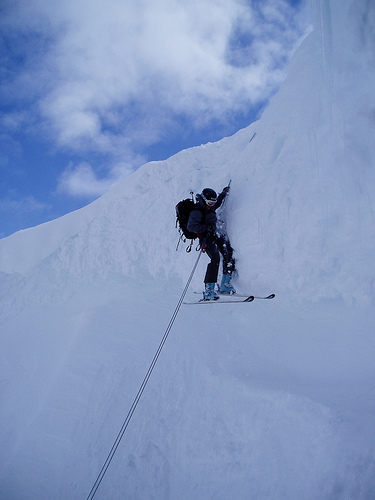
Abseiling
Abseiling is a technique used for descending. It involves the use of a fixed rope for getting down. Other than descending, abseiling technique is also used to make through some narrow and difficult new paths.
Lowering
This technique involves the belays on the base to ensure the safe descending of the climber descending vertically.
Top Skiing Mountains
- Famous Mountain Resorts
Visiting any Famous Mountain Resorts of the World is an exclusive experience on ones life. Especially for those who are real risk takers and thrillers and really want to do something exciting and different. - Famous Skiing Mountains
When ever a skier thinks of getting a ski holiday booked for himself its the time and indication that winters are here. Skiers are winter lovers who get them involved in one of the most thrilling sports.



